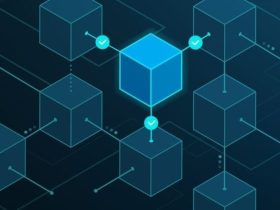Welcome to today’s comprehensive Cybersecurity Roundup—a deep-dive briefing that covers the latest developments, strategic partnerships, significant funding news, and emerging threats reshaping the cybersecurity landscape. In this analysis, we explore a series of breakthrough stories that underscore the transformative impact of cybersecurity initiatives across industries and nations. Today’s edition highlights key narratives: the imperative of securing AI adoption, groundbreaking funding for a pioneering national cybersecurity company, major investments from tech giants like Microsoft in Poland, futuristic predictions that hint at the wild evolution of cyber threats, strategic moves by governments to bolster AI safety, and innovative fraud prevention solutions that promise near-perfect defense.
In a digital era defined by rapid technological advancements and increasing interconnectivity, the need for robust cybersecurity cannot be overstated. The evolving threat landscape, marked by sophisticated data breaches and relentless cyberattacks, demands that both private and public sectors innovate continuously. With AI playing an ever-more critical role in both defending and challenging cybersecurity boundaries, the stories we discuss today offer a window into how industry leaders and policymakers are addressing these challenges head-on.
Today’s news encompasses a diverse range of topics—from the integration of cutting-edge security measures in AI adoption, as discussed by ControlenEurope, to the remarkable $100 million funding round secured by Dream, the first AI company for national cybersecurity. We also examine Microsoft’s $700 million investment in Poland, a strategic move that signals the importance of cross-border cybersecurity partnerships and infrastructure strengthening. Furthermore, we delve into Morphisec’s thought-provoking cybersecurity predictions for 2025, explore the strategic initiatives of Britain’s AI Safety Institute as reported by Politico, and analyze Freshas’s breakthrough AI-powered defense that has reduced fraud by an astonishing 99%.
By weaving together these distinct narratives, this article not only informs but also provides critical analysis on the broader implications of these developments. We will discuss how each initiative reflects evolving cybersecurity trends, what they signal for the future of data protection, and how they may influence global cybersecurity policies. Whether you’re a cybersecurity professional, a technology enthusiast, or simply an informed reader, our goal is to offer you nuanced insights and actionable takeaways.
Securing the Future: Keeping Cybersecurity at the Forefront of AI Adoption
Source: ControlenEurope
As organizations across the globe increasingly integrate artificial intelligence into their operations, the importance of robust cybersecurity protocols for AI adoption has come into sharp focus. An insightful analysis by ControlenEurope highlights that as AI systems become more sophisticated and widely deployed, ensuring their security is not an optional extra but a foundational requirement.
The Convergence of AI and Cybersecurity
AI technologies are transforming every facet of our lives, from streamlining business operations to enhancing consumer experiences. However, as these systems evolve, they also become attractive targets for cybercriminals. ControlenEurope’s report underscores that ensuring the integrity of AI systems is critical—not only to protect the data they process but also to prevent malicious actors from exploiting vulnerabilities that could lead to large-scale breaches.
The convergence of AI and cybersecurity creates a dynamic where the tools designed to enhance efficiency and innovation simultaneously open new avenues for attack. Hackers can target AI algorithms to manipulate outcomes, compromise data integrity, or even hijack control systems. In response, industry experts advocate for a proactive approach: integrating advanced cybersecurity measures at every stage of AI development and deployment. This means embedding robust encryption, real-time monitoring, and anomaly detection systems into AI frameworks.
Key Considerations for AI Security
The report from ControlenEurope emphasizes several key considerations:
- Data Integrity and Privacy: AI systems are only as secure as the data they process. Ensuring data integrity through encryption and secure data management practices is paramount.
- Algorithmic Robustness: AI algorithms must be designed to resist adversarial attacks. This involves incorporating techniques like adversarial training and regular audits to identify and patch vulnerabilities.
- Compliance and Regulation: As governments worldwide tighten regulations around data protection, companies must ensure their AI systems comply with the latest cybersecurity standards and legal requirements.
- Continuous Monitoring and Adaptation: Cyber threats are continually evolving, making continuous monitoring and the ability to adapt defenses in real time essential.
In our view, the emphasis on securing AI adoption is a necessary evolution in the cybersecurity domain. The lessons learned from early-stage vulnerabilities in AI implementations are driving a paradigm shift where cybersecurity is integrated from the ground up. Organizations that adopt a “security-first” mindset will not only protect their assets but also foster greater trust among customers and partners.
The Broader Implications
The message from ControlenEurope is clear: as AI adoption accelerates, cybersecurity must keep pace. This is a call to action for developers, businesses, and regulators to collaborate on creating secure, resilient AI ecosystems. By prioritizing security in AI, we lay the groundwork for a future where technological innovation and data protection coexist harmoniously, ultimately safeguarding critical infrastructure and national interests.
Dream: The First AI Company for National Cybersecurity Raises $100M
Source: BusinessWire
In a bold move that could redefine national cybersecurity, Dream—the pioneering AI company focused on defending nations and critical infrastructure—has successfully raised $100 million in funding. This significant capital injection, as reported by BusinessWire, marks a major milestone for Dream and signals strong investor confidence in AI-driven cybersecurity solutions.
A Revolutionary Approach to National Cyber Defense
Dream’s mission is ambitious: to harness the power of artificial intelligence to create a secure and resilient national defense ecosystem. By leveraging advanced machine learning algorithms and real-time threat analysis, Dream aims to provide governments with the tools necessary to detect, mitigate, and neutralize cyber threats before they can inflict widespread damage.
The $100 million funding round is not merely a financial milestone; it is a validation of the company’s innovative approach to cybersecurity. Investors are increasingly recognizing that traditional defense mechanisms are no longer sufficient in a world where cyber threats evolve at breakneck speed. Dream’s strategy of integrating AI into national defense systems represents a paradigm shift that could transform how governments protect their critical infrastructure.
The Significance of Funding in Cybersecurity Innovation
Securing $100 million in funding is a clear indication of the market’s belief in the potential of AI to revolutionize cybersecurity. This capital will enable Dream to expand its research and development efforts, scale its operations, and deploy its technology across a broader range of applications. With cyber threats becoming more sophisticated and pervasive, such investments are critical to stay ahead of adversaries.
For us, Dream’s success is emblematic of a broader trend in the cybersecurity industry. It reflects a growing acknowledgment that the integration of AI into defense strategies is not only necessary but inevitable. The funding will likely accelerate the development of next-generation cybersecurity tools, fostering innovations that could protect critical infrastructure, secure government networks, and even safeguard private enterprises.
Broader Industry Implications
Dream’s funding round also underscores the strategic importance of public-private partnerships in cybersecurity. As nations face increasingly complex cyber challenges, collaboration between government agencies, private sector innovators, and investors becomes crucial. Dream’s model—combining cutting-edge AI with a focus on national security—sets a benchmark for future ventures in the cybersecurity space.
In summary, the $100 million raised by Dream represents more than just financial support; it is a vote of confidence in a future where AI-driven cybersecurity is central to national defense strategies. As governments around the world brace for evolving cyber threats, investments in innovative solutions like Dream’s will be vital in maintaining national security and protecting critical infrastructure.
Microsoft’s $700 Million Investment in Poland: A Strategic Cybersecurity Partnership
Source: Reuters
In a striking demonstration of its commitment to global cybersecurity, Microsoft has announced a $700 million investment in Poland. This significant investment, detailed in a Reuters report, is part of a broader strategy to strengthen technological infrastructure, foster innovation, and enhance cybersecurity capabilities in critical regions.
Microsoft’s Strategic Vision
Microsoft’s decision to invest heavily in Poland is driven by a recognition of the country’s growing role as a technological hub in Europe. With its robust IT sector, skilled workforce, and strategic location, Poland offers a fertile ground for advancements in cybersecurity and digital innovation. The $700 million investment is expected to support initiatives ranging from cloud infrastructure enhancements to advanced cybersecurity projects that protect critical data and infrastructure.
For cybersecurity professionals, this move represents a strategic partnership that goes beyond mere financial support. It signals Microsoft’s intent to collaborate closely with Polish institutions, government agencies, and private enterprises to build a resilient cybersecurity framework that can serve as a model for other regions. By investing in Poland, Microsoft is not only boosting local economies but also contributing to the global effort to counter cyber threats.
Enhancing National and Regional Security
The investment in Poland has broader implications for regional security. In an era marked by geopolitical tensions and sophisticated cyberattacks, strengthening the cybersecurity infrastructure of key nations is paramount. Microsoft’s funding is likely to catalyze the development of state-of-the-art security systems, research centers, and training programs that can equip Polish cyber defenders with the tools and expertise needed to thwart emerging threats.
Moreover, Microsoft’s involvement could pave the way for innovative collaborations in cybersecurity research and development. By leveraging its global expertise and technological prowess, Microsoft is poised to lead initiatives that integrate advanced AI, cloud computing, and real-time threat intelligence into comprehensive cybersecurity solutions.
The Impact on the Global Cybersecurity Landscape
From an industry perspective, Microsoft’s investment in Poland is a testament to the growing importance of strategic partnerships in the cybersecurity arena. As cyber threats become increasingly borderless, international collaborations are essential for building a unified front against adversaries. Microsoft’s commitment to Poland underscores the notion that cybersecurity is a shared responsibility—one that requires cooperation across governments, corporations, and technology providers.
In our analysis, this investment is a clear indication that leading tech companies are willing to commit significant resources to secure not only their own networks but also those of allied nations. As Microsoft bolsters Poland’s cybersecurity infrastructure, it sets a precedent for other multinational corporations to follow suit, ultimately contributing to a more secure and resilient digital ecosystem worldwide.
Morphisec’s 13 Cybersecurity Predictions for 2025: Forecasting the Future of Digital Defense
Source: Morphisec
Looking ahead to the near future, cybersecurity experts are offering bold predictions about the evolution of cyber threats and defense mechanisms. Morphisec’s “Wild & Weird: 13 Cybersecurity Predictions for 2025” provides a fascinating glimpse into the trends and challenges that are likely to shape the cybersecurity landscape over the coming years.
Embracing the Wild and Unpredictable
Morphisec’s predictions range from the rise of new, unconventional threat vectors to the increasing sophistication of cybercriminal operations. One of the key takeaways from the report is that the next few years will see a dramatic acceleration in both the complexity and volume of cyber threats. As attackers harness the power of AI, IoT, and quantum computing, traditional security measures may no longer suffice. Instead, organizations will need to adopt dynamic, adaptive strategies that can anticipate and neutralize threats before they materialize.
Key Predictions and Their Implications
Some of the most striking predictions include:
- Increased Use of AI by Hackers: Cybercriminals will likely use AI to automate attacks and bypass traditional defenses, necessitating a corresponding evolution in AI-powered cybersecurity solutions.
- Quantum Computing as a Double-Edged Sword: While quantum computing holds the promise of revolutionizing data processing, it also poses a significant risk to current encryption standards. Organizations must prepare for a future where quantum-resistant algorithms become the norm.
- Expansion of Attack Surfaces: With the rapid growth of connected devices and the proliferation of smart technologies, the attack surface will expand exponentially, making comprehensive security strategies more critical than ever.
- Emergence of New Threat Actors: As technology becomes more accessible, we may see a rise in non-traditional threat actors—from hacktivists to organized cybercrime syndicates—challenging the established order.
In our view, these predictions are a clarion call for proactive investment in next-generation cybersecurity technologies. Organizations that are able to foresee and adapt to these trends will be better positioned to safeguard their assets and maintain operational resilience.
Preparing for a Transformed Cyber Landscape
Morphisec’s forecasts emphasize the need for continuous innovation in cybersecurity. Traditional perimeter-based defenses are no longer sufficient in a world where threats are dynamic and multifaceted. Instead, a layered security approach—integrating advanced threat detection, real-time response, and predictive analytics—will be essential.
Moreover, the report underscores the importance of collaboration among industry stakeholders. As cyber threats evolve, so too must the collective defense strategies, with governments, private companies, and cybersecurity firms working together to share intelligence and develop unified responses.
In summary, Morphisec’s predictions for 2025 provide both a warning and a roadmap. They remind us that while the future of cybersecurity may be wild and unpredictable, it is not beyond our control. With the right investments in technology and strategic partnerships, we can build a defense system that is as adaptive as it is robust.
AI Safety and National Security: The British Initiative
Source: Politico
In parallel with global cybersecurity initiatives, Britain is taking bold steps to integrate artificial intelligence into its national security framework. A recent article by Politico outlines the establishment of the AI Safety Institute (AISI), a government-backed initiative aimed at bolstering the country’s defenses against cyber and AI-related threats.
The Rationale Behind the AI Safety Institute
The creation of AISI reflects a growing recognition that artificial intelligence is both a powerful tool and a potential vulnerability. As AI becomes deeply embedded in critical infrastructure and defense systems, ensuring its safety and reliability is paramount. Britain’s initiative is designed to create a centralized body that will develop standards, conduct rigorous testing, and coordinate responses to AI-driven cybersecurity incidents.
Strategic Objectives and Expected Outcomes
AISI’s objectives are multifaceted:
- Developing Robust AI Standards: Establishing clear guidelines for the safe and ethical use of AI in critical sectors.
- Enhancing Interagency Collaboration: Facilitating coordination between government bodies, private companies, and academic institutions to share best practices and intelligence.
- Promoting Research and Innovation: Funding cutting-edge research into AI safety and security, ensuring that Britain remains at the forefront of technological innovation.
In our assessment, the establishment of AISI is a forward-thinking measure that underscores the importance of proactive governance in the era of digital transformation. By investing in AI safety, Britain is not only protecting its own interests but also setting a global benchmark for responsible AI integration in national security.
Implications for Global Cybersecurity
The British initiative has far-reaching implications for the global cybersecurity landscape. It signals a shift towards more integrated and comprehensive approaches to AI safety, where technological innovation is balanced with stringent oversight and ethical considerations. As other nations observe Britain’s progress, similar models may be adopted worldwide, fostering a more secure and resilient international cyber environment.
Freshas AI-Powered Defense: Reducing Fraud by 99%
Source: PRNewswire
In a remarkable demonstration of AI’s potential to combat cybercrime, Freshas has unveiled its latest AI-powered defense system that has achieved a staggering 99% reduction in fraud. As reported by PRNewswire, this breakthrough technology is set to revolutionize fraud prevention and cybersecurity, offering unprecedented protection for businesses and consumers alike.
The Technology Behind Freshas’s Breakthrough
Freshas’s innovative system leverages advanced machine learning algorithms and real-time data analytics to detect, analyze, and neutralize fraudulent activities before they can escalate. By continuously learning from new data and evolving its detection strategies, the system provides dynamic protection against an ever-changing array of threats. The nearly complete elimination of fraud in controlled environments is a testament to the technology’s efficacy and the transformative potential of AI in cybersecurity.
Transforming Fraud Prevention
The success of Freshas’s solution is particularly significant in a time when fraud schemes are becoming more sophisticated and widespread. Traditional fraud prevention methods, often reactive and manually intensive, can no longer keep pace with the speed and complexity of modern cyber threats. Freshas’s AI-powered defense system not only streamlines the detection process but also reduces the risk of human error, making it an invaluable tool for organizations aiming to protect their financial assets and customer data.
Broader Implications for Cybersecurity
The breakthrough achieved by Freshas underscores a key trend in the cybersecurity industry: the increasing reliance on AI to enhance threat detection and response. With fraud representing a significant portion of cybercrime globally, innovative solutions like Freshas’s have the potential to dramatically reduce losses and build greater consumer confidence in digital transactions.
In our view, Freshas’s achievement is a harbinger of a future where AI-driven solutions become the standard in cybersecurity. As more companies adopt such technologies, we can expect a ripple effect that will elevate overall industry standards and drive further innovation in fraud prevention.
Synthesis and Industry Insights: Navigating a Complex Cyber Landscape
As we reflect on today’s news stories—from securing AI adoption and groundbreaking funding to strategic investments and transformative fraud prevention—several key themes emerge that encapsulate the current state and future trajectory of the cybersecurity industry.
Key Trends Shaping Cybersecurity
-
Integration of AI Across the Board:
AI is revolutionizing every aspect of cybersecurity, from protecting critical infrastructure to streamlining fraud detection. Companies and governments alike are investing heavily in AI-driven solutions, recognizing that traditional defenses are no longer sufficient. -
Strategic Partnerships and Cross-Border Investments:
The collaboration between industry leaders, as exemplified by Microsoft’s investment in Poland and Britain’s establishment of the AI Safety Institute, highlights the importance of partnerships in building robust cybersecurity infrastructures. These alliances are crucial for sharing intelligence, developing unified standards, and fostering innovation. -
Increased Funding and Market Confidence:
The successful $100 million funding round for Dream and significant investments from global giants signal strong market confidence in the future of cybersecurity. Such financial backing is essential to drive R&D efforts and ensure that advanced technologies remain at the forefront of defense strategies. -
Future-Forward Predictions and Adaptability:
Morphisec’s cybersecurity predictions remind us that the threat landscape is rapidly evolving. Companies must remain agile and invest in adaptive technologies that can preempt and counter emerging threats before they materialize. -
Innovative Solutions to Persistent Problems:
The breakthrough by Freshas in reducing fraud by 99% is a powerful example of how innovative, AI-powered systems can address longstanding challenges in cybersecurity. This success is likely to spur further research and adoption of similar technologies across the industry.
The Broader Implications
These trends indicate that cybersecurity is entering a new era—one characterized by dynamic innovation, strategic collaboration, and an unyielding commitment to protecting critical assets in an increasingly digital world. The fusion of advanced AI technologies with traditional cybersecurity measures promises to create a more secure and resilient ecosystem, capable of withstanding even the most sophisticated cyberattacks.
For businesses and governments, the message is clear: investing in robust cybersecurity measures is no longer optional—it is a necessity. Whether through strategic funding, innovative technological integration, or international partnerships, the future of cybersecurity hinges on our collective ability to anticipate and adapt to the evolving threat landscape.
Conclusion: Embracing a Resilient Cyber Future
In today’s fast-paced digital era, the cybersecurity landscape is undergoing rapid and profound transformation. From the imperative of embedding security in AI adoption to the revolutionary funding of companies like Dream, from major strategic investments by Microsoft to bold predictions from Morphisec, and from groundbreaking national initiatives in AI safety to innovative fraud prevention solutions by Freshas, the stories we have explored today paint a vivid picture of an industry in flux.
The emerging trends highlighted in this briefing reveal a future where cybersecurity is both a technological battleground and a strategic priority. Key lessons include:
-
The Need for Integrated Security:
As organizations increasingly rely on AI and other digital technologies, ensuring robust, proactive security measures is essential. The successful integration of security into AI frameworks sets a precedent for future technology deployments. -
Collaborative Investment and Strategic Partnerships:
The investments and partnerships detailed in today’s stories underscore the critical importance of collaboration across borders and sectors. These alliances not only enhance technological capabilities but also build a collective defense against emerging cyber threats. -
Innovation as a Catalyst for Change:
Breakthroughs in fraud prevention and predictive cybersecurity illustrate that innovation is the key to staying ahead of cyber adversaries. Organizations that invest in adaptive, AI-driven solutions will be better equipped to navigate the complex threat landscape of tomorrow. -
Preparing for an Unpredictable Future:
With cybersecurity predictions pointing to an increasingly dynamic and complex threat environment, agility and adaptability must become central tenets of any cybersecurity strategy. Companies and governments alike need to invest in technologies and partnerships that enable them to anticipate and counter threats in real time.
In conclusion, the cybersecurity stories we’ve examined today are not isolated events but part of a broader narrative—a narrative that calls for a unified, proactive approach to digital defense. As we move forward, it is imperative that stakeholders across industries and nations continue to collaborate, innovate, and invest in cybersecurity. By doing so, we can build a future where technology not only drives progress but also safeguards our critical infrastructures and, ultimately, our way of life.
Thank you for joining us on this extensive exploration of today’s cybersecurity trends and innovations. As we continue to witness groundbreaking developments in partnerships, funding, and emerging threats, stay tuned for tomorrow’s briefing, where we will bring you the latest insights and analysis from the ever-evolving world of cybersecurity.















Got a Questions?
Find us on Socials or Contact us and we’ll get back to you as soon as possible.